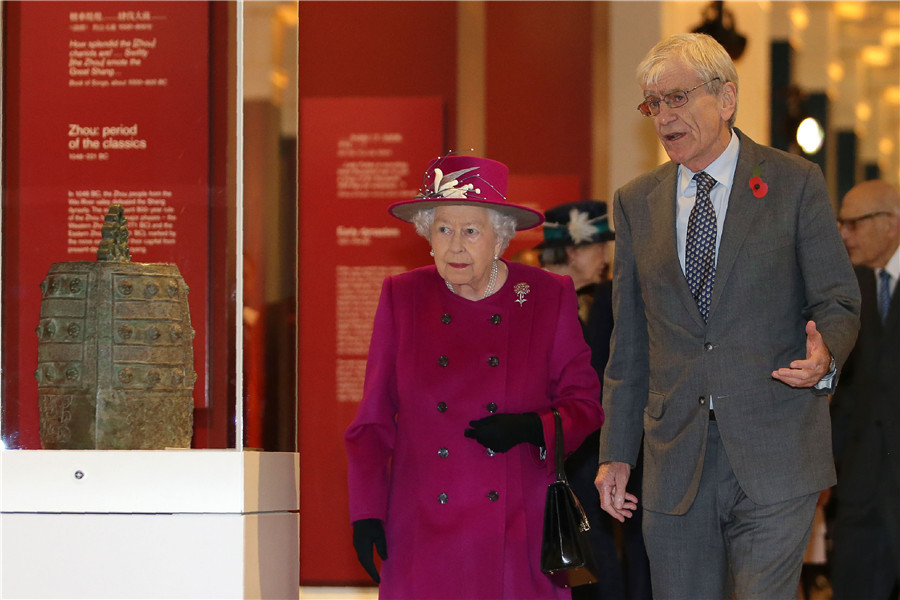RESOURCES
2018-04-04 Source:China Daily

Queen Elizabeth II is accompanied by Sir Richard Lambert, chairman of the Trustees of the British Museum, during a visit to the museum in London to reopen the Sir Joseph Hotung Gallery of China and South Asia. [Photo/Agencies]
Every culture has its uniqueness. The challenge for the British Museum to be an encyclopedic one is to showcase not only the exclusiveness of cultures but the coherent interconnectivity among them, says the British Museum's director Hartwig Fischer.
"What we are looking at is the incredible diversity ... And at the same time we look at that common ground, the shared humanity, and these two things need to be brought to light and have to be made accessible," Fischer says.
The British Museum has unveiled a 10-year and beyond transformation plan which includes bringing back its Reading Room and major refurbishments of galleries in a bid to take the museum to "the next level".
"I think each culture has a possibility to see the world in a very specific way and one is not necessarily better than the other. It's different.
"What we have to do is rethink the display of our collection, to stress how cultures have grown into what they are ... The China gallery is the first big step," Fischer says.
The China and South Asia Gallery is described by Fischer as the "most imposing room" in the British Museum. Built by King Edward VII in the early 20th century, the gallery distinguishes itself with its bold and noble features with gilding, strong pillars and plaster decorations.
As part of the Museum's renovation project, the China gallery fully reopened to the public last December after a two-year refurbishment.
The museum has upgraded the floor, lighting and exhibition structure of the China gallery in a bid to improve visibility and understanding for the museum's 7 million annual visitors.
In addition to the iconic Ming Dynasty (1368-1644) blue-and-white porcelain and exquisite Tang Dynasty (618-907) tomb figurines, the gallery has also incorporated various rotating light-sensitive objects such as paintings, prints and textiles to present Chinese history from 5,000 BC.
Notably, some of the modern artworks are on display for the first time in this gallery as the museum seeks to present a glimpse of present China.
"Nobody has ever enough to present the history of China. That is impossible. It is too vast, too varied. It's too layered. So what we can do in such a place is to offer routes of access and confront you with the most stunning achievements," Fischer says.
The China gallery, together with a separate gallery of Chinese ceramics, offers visitors many ways of engaging with China's history and cultures, he says.
Fischer says the efforts to incorporate modern artworks into the display is to demonstrate "a huge and rich phenomena" in which present-day China relates to its past.
"Looking at the way present China relates to its past, you understand that culture is actually at the heart of resilience, the possibility to survive and to develop and to thrive."
Fischer describes the museum world in China as "extremely dynamic", as "it is looking not only on the great past but also the great future". The British Museum is working closely with Chinese counterparts on joint projects and on the long-term basis in both Britain and China for study and exhibitions, says Fischer.
"The key is people meeting and people working together. There is always space to do more, to explore our collections, to explore history, to explore through the exhibition, through research projects," he says.
The British Museum is "very keen" to share its exhibitions and collections with Chinese audiences, who are the biggest single foreign group of visitors to the museum, says the director.